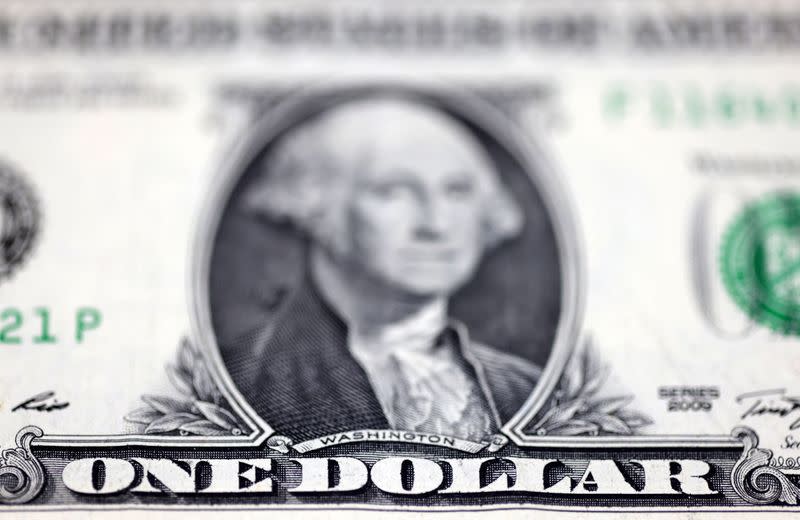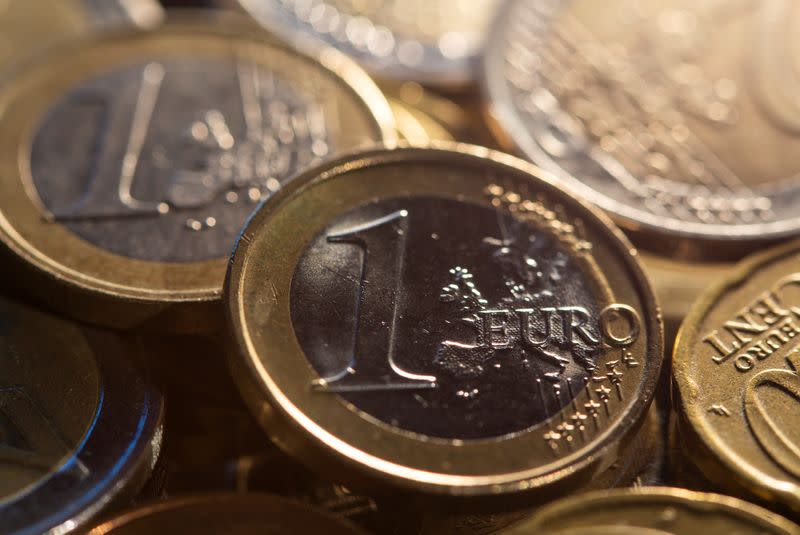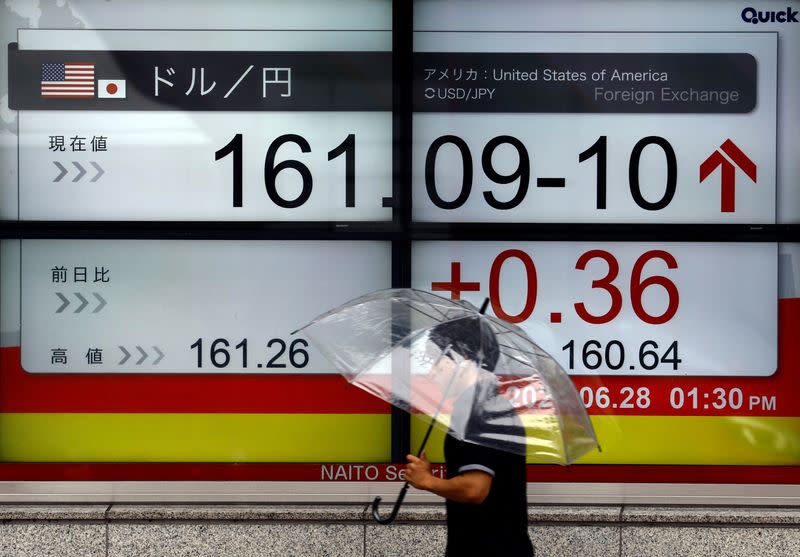US dollar slightly weaker on diminishing inflation
By Gertrude Chavez-Dreyfuss
NEW YORK (Reuters) -The U.S. dollar slipped on Friday after data showed inflation in the world's largest economy subsided last month, cementing expectations the Federal Reserve will start cutting interest rates this year.
The dollar initially fell against the yen, the currency pair most sensitive to U.S. economic data because of a high, positive correlation to Treasury yields. The greenback, however, edged higher to trade flat on the day, with investors still focused on the wide interest rate differential between the United States and Japan.
The dollar was last up slightly against the Japanese unit at 160.815 yen, after earlier hitting a 38-year high of 161.27 yen. Traders remained on high alert for intervention from Japanese authorities to boost its currency.
The U.S. currency has posted monthly and quarterly gains versus the yen of about 1.9% and 5.9%, respectively.
Data showed the U.S. personal consumption expenditures (PCE) price index, the Fed's preferred inflation measure, was unchanged last month, and followed an unrevised 0.3% gain in April, data showed. In the 12 months through May, the PCE price index increased 2.6% after advancing 2.7% in April.
"The PCE report was mostly in line with expectations, which confirms the disinflationary trend as shown by the CPI (consumer price index), PPI (producer price index) numbers earlier this month," said Boris Kovacevic, global macro strategist at Convera in Vienna, Austria. "The macro data continues to point to a softening of the U.S. economy."
Following the inflation data, fed funds futures slightly raised the chances of easing in September to around 67%, from about 65% late Thursday, according to LSEG calculations. The market is also pricing between one to two rate cuts of 25 bps each this year.
A separate report on Thursday showed business activity in the Midwest came in better than expected, modestly helping the dollar. The Chicago purchasing managers' index (PMI) jumped to 47.4 from 35 in May, and better than the 40 that economists projected.
University of Michigan consumer sentiment, meanwhile, showed a reading of a better-than-expected 68.2 for June, also dollar-supportive. In addition, respondents to the sentiment survey expect near- and long-term inflation expectations to level out at 3%.
Investors will now focus on next week's U.S. nonfarm payrolls report, in which Wall Street economists are forecasting a gain of 195,000 in June, compared with 272,000 in May.
"Next week’s employment report will give us the opportunity to see if the job market is slowing," said David Donabedian, chief investment officer of CIBC Private Wealth, in emailed comments.
"This number will have to be a big surprise to the downside to suggest the Fed will act in July to lower rates. We expect the Fed to stay pat unless the job market starts to falter."
In other currencies, the euro was up 0.1% at $1.0709 .
The euro, down 1.3% against the dollar in June, was on track for its biggest monthly fall since January as political uncertainty weighed in the run-up to France's general elections.
For the second quarter, Europe's single currency fell 0.7%.
Investors fear a new French government could increase fiscal spending, threatening the sustainability of the country's public debt and the financial stability of the bloc.
Against the Swiss franc, the dollar was little changed at 0.8986 francs.
Aside from the economic data, market participants were also focused on U.S. politics.
Republican U.S. presidential candidate Donald Trump unleashed a barrage of at-times false attacks on President Joe Biden in their first campaign debate in Atlanta, with the dollar rising as Biden stumbled over his words a few times in early exchanges.
The debate increased the odds of a Trump presidency and the imposition of import tariffs. Traders bought dollars overall as a Trump administration suggests more aggressive tariffs that could be inflationary and could trigger higher interest rates.
Currency
bid
prices at
28 June
04:28
p.m. GMT
Descripti RIC Last U.S. Pct YTD Pct High Low
on Close Change Bid Bid
Previous
Session
Dollar 105.79 105.89 -0.08% 4.36% 106.13 105.
index 78
Euro/Doll 1.072 1.0704 0.15% -2.88% $1.0722 $1.0
ar 685
Dollar/Ye 160.84 160.81 0.02% 14.03% 161.27 160.
n 305
Euro/Yen 1.072 172.06 0.22% 10.79% 172.44 171.
46
Dollar/Sw 0.8985 0.8988 -0.03% 6.76% 0.901 0.89
iss 8
Sterling/ 1.2645 1.2639 0.06% -0.62% $1.267 $1.0
Dollar 685
Dollar/Ca 1.368 1.3701 -0.14% 3.21% 1.3734 1.36
nadian 76
Aussie/Do 0.6674 0.6648 0.4% -2.11% $0.6685 $0.6
llar 62
Euro/Swis 0.9629 0.9617 0.12% 3.69% 0.9639 0.96
s 1
Euro/Ster 0.8474 0.8468 0.07% -2.24% 0.8481 0.84
ling 58
NZ 0.6095 0.6083 0.19% -3.55% $0.6101 0.60
Dollar/Do 58
llar
Dollar/No 10.6637 10.6221 0.39% 5.22% 10.6948 10.6
rway 116
Euro/Norw 11.4325 11.3732 0.52% 1.86% 11.4347 11.3
ay 67
Dollar/Sw 10.5942 10.6226 -0.27% 5.24% 10.6618 10.5
eden 83
Euro/Swed 11.3586 11.3755 -0.15% 2.1% 11.4033 11.3
en 364
(Reporting by Gertrude Chavez-Dreyfuss; Additional reporting by Stefano Rebaudo in Milan; Editing by Sharon Singleton, Chris Reese and Diane Craft)

 Yahoo Finance
Yahoo Finance 


